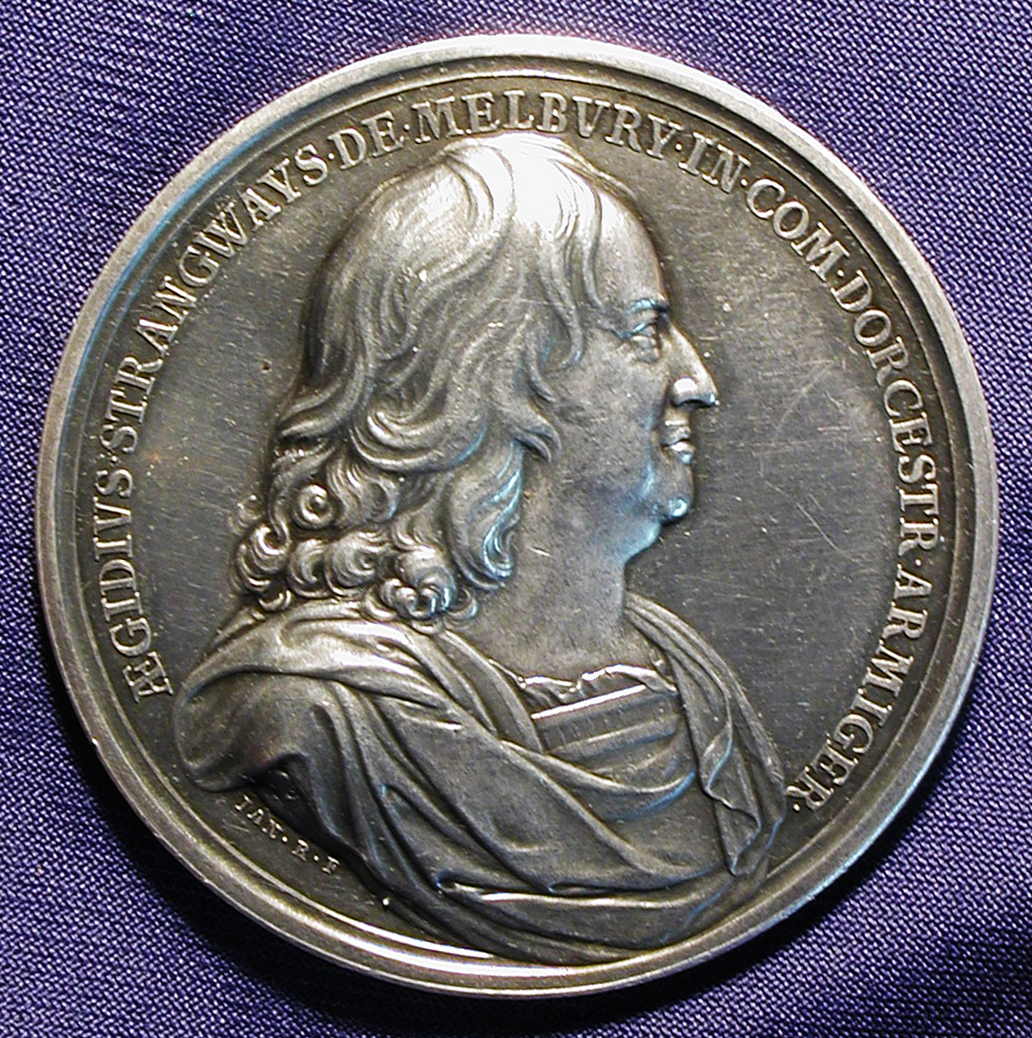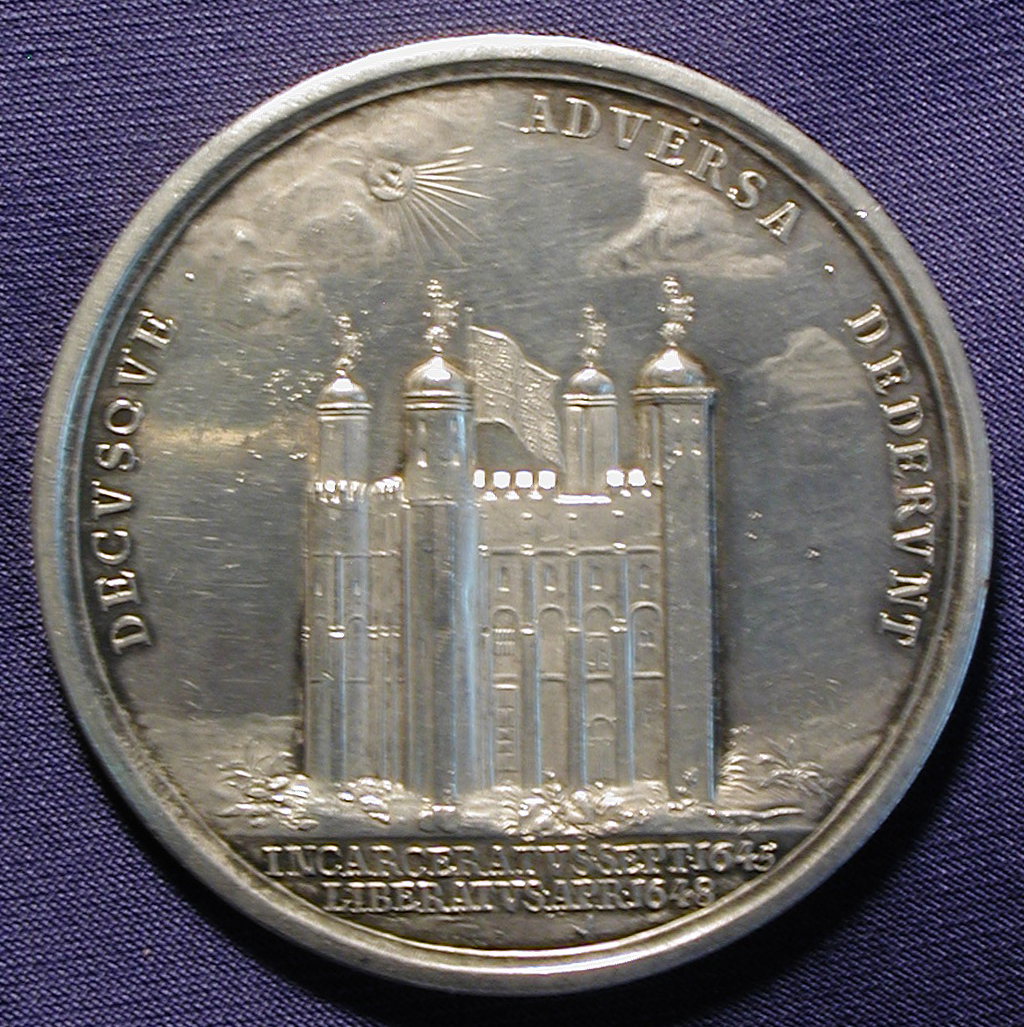

Historical and Commemorative
Medals
Collection of Benjamin Weiss


|
RELEASE OF GILES STRANGWAYS FROM WHITE TOWER OF LONDON by Roettier, John: England, ca.1670, Silver, 60 mm. Giles Strangways (1615 –1675) was an English politician who sat in the House of Commons variously between 1640 and 1675. He fought on the Royalist side in the English Civil War. This medal was executed after the Restoration by John Roettier (ca. 1670), one of an intended series ordered by Charles II of distinguished sufferers in the royal cause. The design of the reverse of this medal was suggested by Charles II himself. Strangways commanded a regiment of horse in the King's service in the West, was persecuted by the Parliament, heavily fined, and imprisoned in the Tower with his father. They are said to have suffered in the royal cause to the extent of £30,000. At the Restoration he represented Dorsetshire in Parliament, and was intimate with Pepys, who mentions him several times in his Diary. Notes on this medal are given in the Archaeological Journal of the Archaeological Institute of Great Britain and Ireland, London, XXIII. p. 127. The dies are in the British Museum. See Pinkerton, J., ‘The Medallic History of England to the Revolution’, London, 1790 (fol.), xviii. 9; Evelyn, John, ‘A Discourse of Medals ancient and modern, &c’, London, 1697 (fol.), 115.
|
|